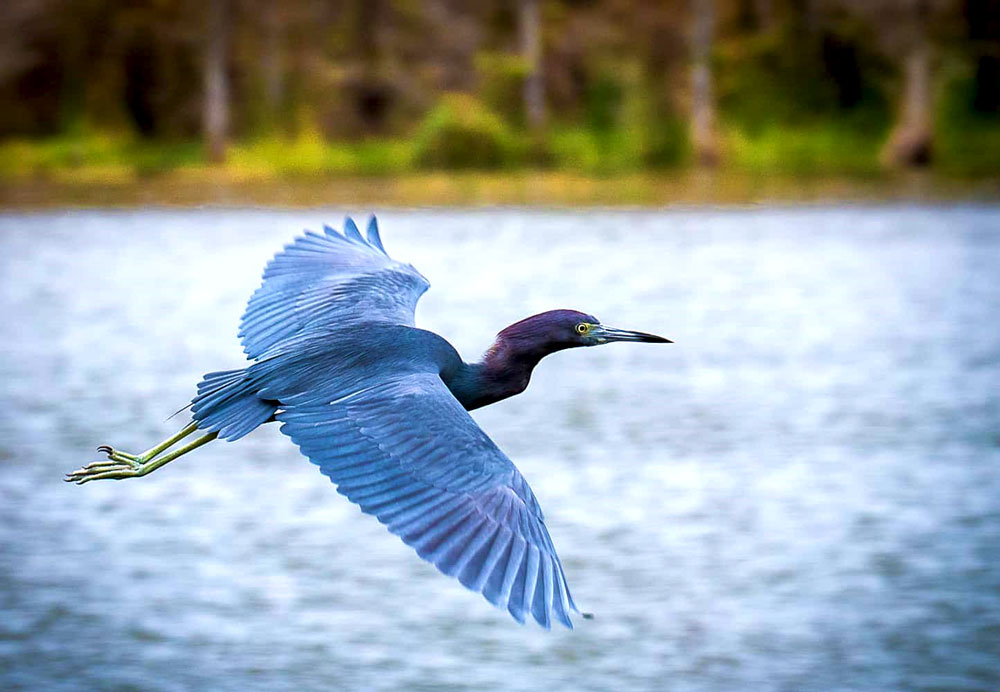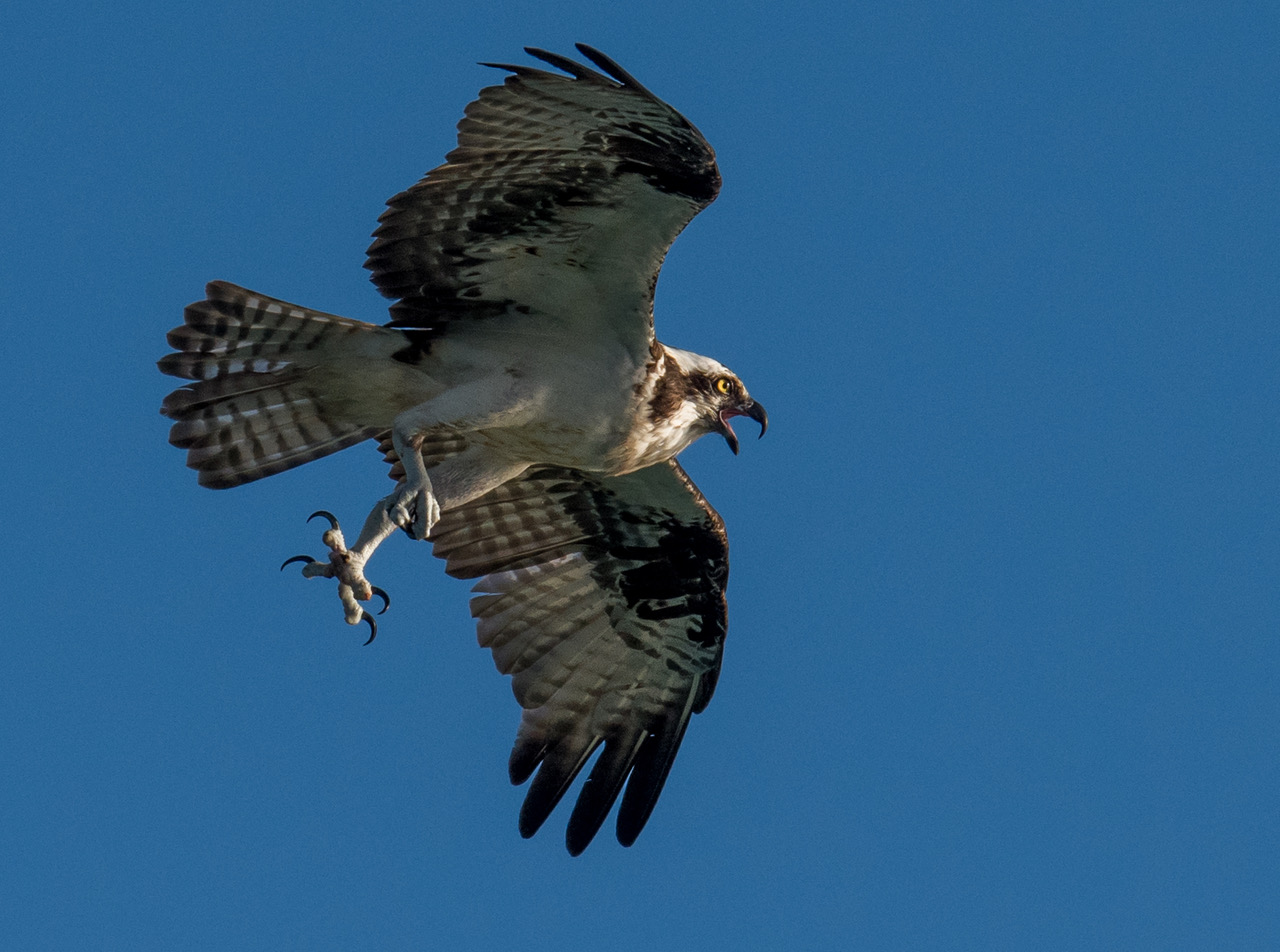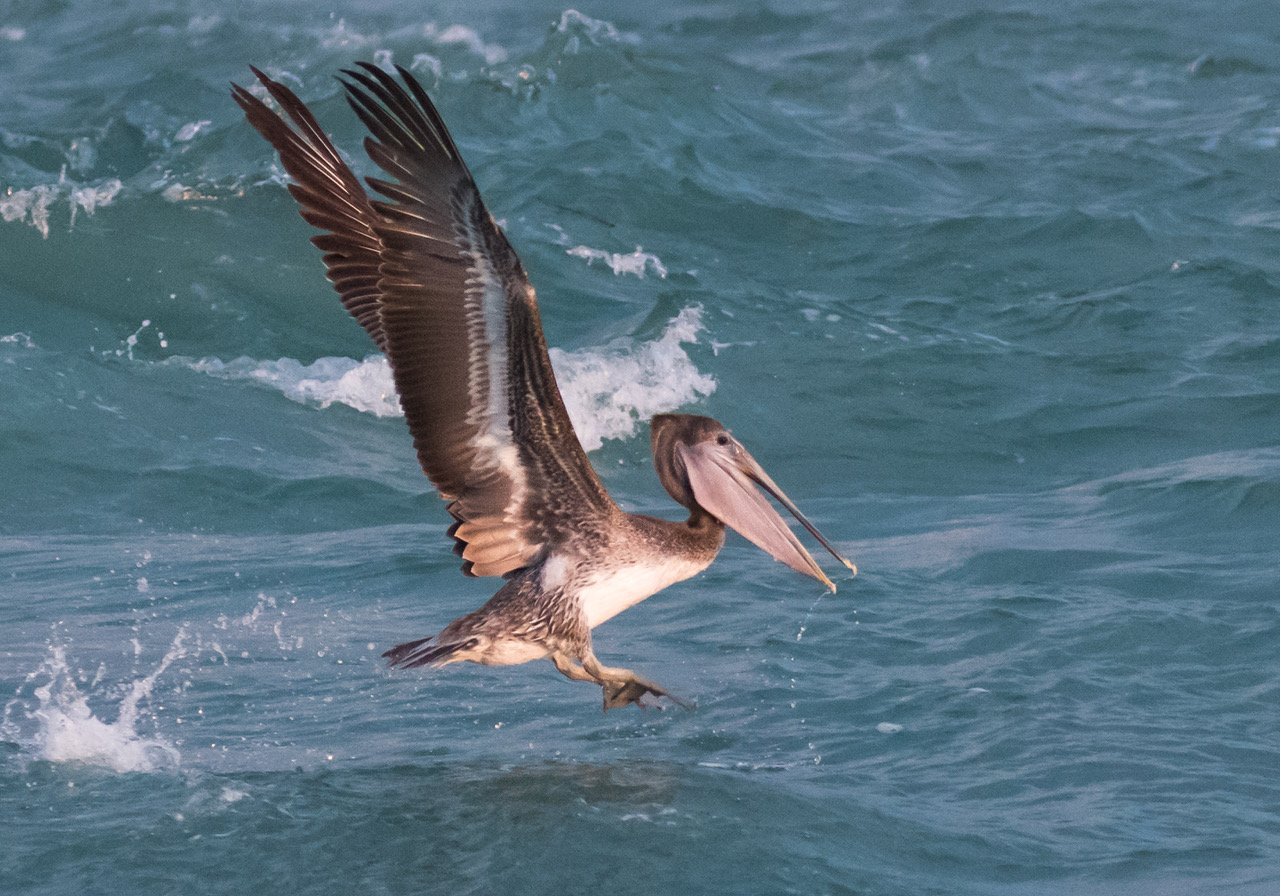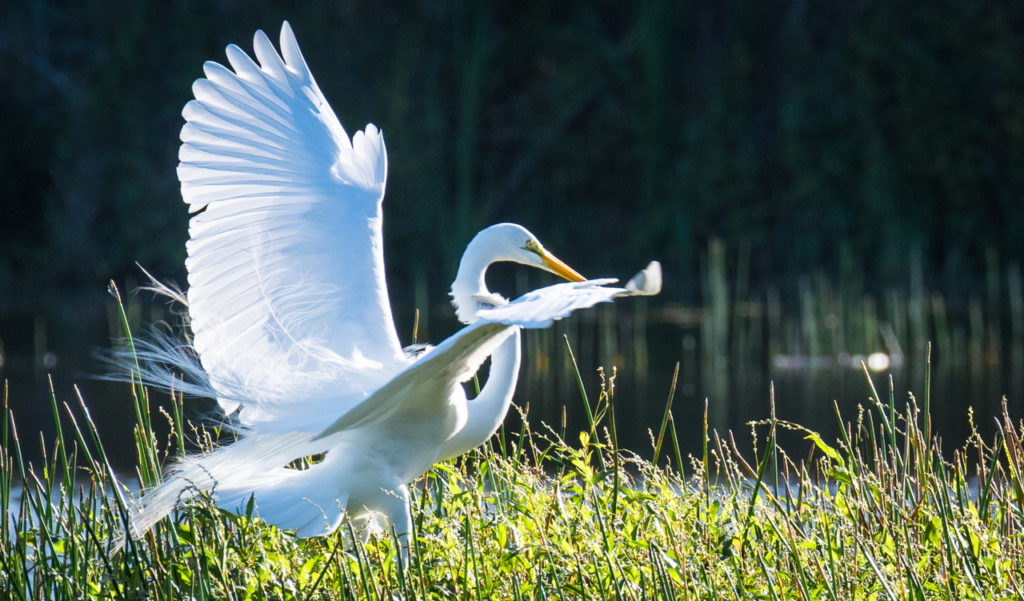Its easy with just three adjustments to your camera settings.
- First, dial in the high-speed continuous focus.
- Next, go to your menu and change the focus target area to the smallest pin-point target.
- Finally, the game-changer here is “back button focusing. Go to your Menu and change the assignment of focusing from your top of the camera shutter button to the back auto focus (AF) button.
Once you acquire the bird, you simply press and hold down both the back AF button (with your thumb) and the shutter button (with your fore finger).

The camera fires away and effortlessly locks focus on the target you give it – which should be the bird’s eye and head.
Using a monopod to support your telephoto lens will save your arm muscles and reduce camera shake.

Keeping an aperture of F-5.6 to F-8 keeps large birds sharp from wingtip to wingtip. Once you have mastered the shot at F-5.6, you can attempt F-4 or F-2.8 for the softest defocused backgrounds. Those amazing shots where the bird’s eyes are tack sharp but, the background is only a wash of color-not a busy forest or marsh that competes with the subject.
Shutter speed depends upon your subject. Large wading birds like Herons, Egrets and Spoonbills are relatively slow flying and can be captured at 1/750 to 1/1000 of a second. Diving raptors like Osprey and Owls are much faster and will require 1/2000 or more to freeze. Humming birds are fastest of all and need a shutter speed of 1/4000 of a second to image.

One dawn, I arrived at a lake that was surrounded by tall trees covered with wading birds of all kinds. As the sun rose, one by one, they took off, flew toward me to land in the water. As the Light progressively increased, I could increase the shutter speed and to capture it all, sharp feathers, water droplets splashing even a few beaks filled with fish!
Artistically, I like to keep the sun behind and to the side of my subjects for dramatic “rim lighting” on the feathers contrasted with dark backgrounds. This is the “art” part of photography. There are no rules. Don’t be afraid to move around your subjects until you find angles that make the images you prefer!
Give me a partially submerged sandbar to stand on, or a spit of river stones to set up my tripod. If I’m touching water, I am happy. If I’m getting my feet wet while taking photos, better still!
“At the end of three days of capturing the best of nature within Florida’s pristine parks, waterways, and beaches, participants experience a transformation from an anxiety driven life, to a purpose driven one.”
-RJ Gibson

